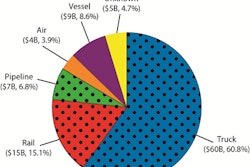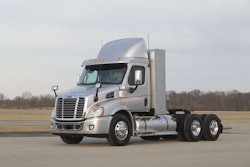Our management team read the recent “Natural Gas 101” article with great interest. We manage numerous projects for our clients using CNG as the primary fuel source and believe that the CNG/LNG debate is not a question of right or wrong, but a matter of simplicity. Early adapters are running both CNG and LNG fleets successfully across large portions of the United States, with many more fleets “on deck” to switch.
One is a gas, one is a liquid; both techniques work, and both will improve quickly. Therefore, it is in the commercial carrier industry’s best interest to gravitate toward the option that provides drivers, haulers and corporations the greatest opportunity for value and convenience. For that reason, we are writing this letter to clear up several misconceptions about CNG, which we believe have not yet been addressed.
Misconception No. 1 is that CNG is for short- and medium-length hauls or return-to-base operations only. Our company has logged more than 10 million miles running CNG on 9L and 12L trucks with an average length of haul that is 500-plus miles. Tank packages currently available from Agility Fuel Systems and Trilogy Engineered Solutions have ranges up to 750 miles on a single fill. We see the market for Class 8 trucks being perfect today for CNG.
Misconception No. 2 is that the price difference between CNG and LNG is small. On average, CNG costs $2.20 per DGE versus $2.78 per DGE for LNG. Any fleet running 100,000 miles or more will have a major cost savings by running CNG trucks. On our projects, we are seeing total operating cost-per-mile savings in excess of $0.15 per mile for Class 8 trucks.
Misconception No. 3 is that LNG is widely available. It is not. Across the U.S., there are 28 operational LNG stations compared to 560 public CNG stations. Furthermore, less than 25 percent of the LNG stations built for America’s Natural Gas Highway (trademark owned by NASDAQ: CLNE) actually dispense fuel due to a lack of LNG customers. By contrast, 100 percent of the CNG stations listed on the Department of Energy’s Clean Cities website currently dispense natural gas.
Misconception No. 4 is that it takes too long to fill a Class 8 truck with CNG. Engineering advancements have made the best-in-class stations capable of fast-fill rates of 10-12 gallons per minute (while filling several trucks simultaneously). The standard 120 DGE tank system fills in 10 minutes.
Misconception No. 5 is that the equipment required to run CNG is too expensive to result in a positive ROI. We are currently leasing CNG equipment that is in line with payments for diesel equipment as mature CNG technology is now being appraised appropriately by bankers and private asset managers. Most of our clients require an ROI of 18 to 24 months, which they are beating with CNG.
We cannot speak for other companies, but can only be transparent with our own information about the major opportunity for CNG in the Class 8 market. To date, we have contracted 104 CNG power units, with 156 more in the next 12 months and another 750 in the pipeline.
At our inception, we had the unique opportunity to explore both CNG and LNG specifically for the Class 8 market. When push came to shove, our research exposed that the incremental density of LNG does not outweigh the opportunity to easily produce CNG onsite without excess storage or transport costs.
Ultimately, both products are functional ways to store natural gas, yet we have found that the simplicity of CNG provides drivers, haulers and corporations the greatest value and convenience with the fewest hassles and hazards.
Jeff Whitcomb is the EVP of sales and marketing for AMP Americas. Zack Cupkovic is the director of communications of AMP Americas.












